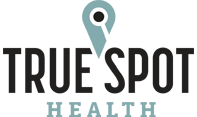In the quest for more advanced healthcare, RTLS has emerged as a critical technology for improving patient care and operational efficiency. However, the traditional reliance on WiFi has presented numerous challenges. High infrastructure costs, complex installation processes, and frequent signal interferences have impeded the deployment of RTLS in many healthcare settings. TrueSpot’s patented AQFind network, powered by LoRa technology, addresses these pain points, offering a more accessible and robust solution for RTLS applications.
By Michael Simpson | TrueSpot Health | November 20, 2023
FCC Bandwidth Compliance: A Spectrum of Possibilities:
LoRa’s operation within the 902-928 MHz ISM bands in North America offers a compelling alternative to licensed frequencies. By eliminating expensive licensing fees and reducing the financial burden on healthcare institutions, LoRa facilitates an economical and compliant adoption of RTLS technologies. The bandwidth not only complies with FCC regulations but is also well-suited for the efficient transmission of the small packets of data that are typical in RTLS, ensuring that crucial information is communicated in a timely and effective manner.
The FCC’s allocation of this spectrum for LoRa use also ensures a clear path for innovation in healthcare communications. By not competing with commercial telecommunication providers, healthcare facilities can develop and deploy RTLS solutions with the assurance that they operate within regulated parameters. The regulation of LoRa’s bandwidth reduces the likelihood of future regulatory conflicts and paves the way for a more stable and dependable RTLS infrastructure.
Harmonious Coexistence: Safeguarding Critical Medical Equipment:
Integrating new technologies in healthcare settings poses a significant risk of electromagnetic interference with life-critical medical devices. LoRa’s spread spectrum technology significantly mitigates these risks. By operating at a frequency that is less congested than the standard WiFi bands, LoRa ensures that hospital operations can incorporate RTLS without the fear of disrupting medical equipment. The successful deployment of LoRaWAN in various hospital systems illustrates its ability to coexist with sensitive medical devices, providing a reliable solution that enhances, rather than endangers, patient care.
The reliability of LoRa is further enhanced by its ability to adjust transmission power and data rate, allowing for fine-tuning that minimizes the potential for interference. This adaptability makes LoRa an ideal choice for healthcare environments where device density and layout vary greatly. Every corner of a facility, including outdoors, can be covered without compromising the integrity of critical monitoring equipment.
Superiority Over WiFi: A Clear Signal Advantage:
WiFi’s shortcomings in hospital environments are well-documented, with signals often getting lost or degraded due to physical barriers and interference from medical equipment. LoRa’s superior signal penetration capability allows for uninterrupted communication within healthcare facilities. RTLS networks can be implemented more effectively with LoRA, ensuring that critical data is received accurately and timely. LoRa’s efficient signal propagation means that fewer access points are needed, reducing the complexity and cost of network infrastructure and maintenance.
In addition, LoRa’s unique modulation scheme allows signals to reach beyond traditional barriers, offering a level of reliability that WiFi cannot match. Whether transmitting through thick hospital walls or between floors, LoRa maintains a strong signal fidelity, ensuring consistent performance and reliability in patient tracking and asset management—areas where WiFi often falters.
Cost-Effectiveness: A Dose of Fiscal Responsibility:
Beyond installation and maintenance savings, LoRa stands out for its operational cost efficiency. The technology’s low power consumption translates into extended device battery life and lower energy costs. The lower power consumption is particularly beneficial in a healthcare setting where hundreds, if not thousands, of devices may be in operation, representing significant long-term savings. Additionally, the inherent stability and durability of LoRa networks mean less frequent upgrades and repairs, allowing healthcare facilities to redirect those savings into patient care and other critical services.
LoRa’s economic advantages are accentuated when considering the scalability and flexibility of RTLS deployments. As healthcare demands grow and change, LoRa-based systems can be expanded with minimal additional investment, unlike WiFi systems that may require substantial hardware updates to scale up or adapt to new requirements.
Operational efficiency and patient satisfaction:
Real-Time Location Systems (RTLS) enhances hospital operational efficiency, boosting patient flow and room turnover rates and increasing revenue. In December of 2021 the ECRI Institute highlighted the negative impacts of Emergency Department (ED) overcrowding, including lost revenue and elevated patient risk.
Improving patient flow also boosts patient satisfaction, influencing Medicare and Medicaid reimbursement rates. Dartmouth’s Tuck School of Business Professor Laurens Debo states in a paper he and his team did on wait times that EDs “struggle to improve the patient experience while dealing with long waits, which erodes medical and financial performance.” He suggested reducing ED wait times to improve patient satisfaction by expanding hospital capacity or providing accurate estimates.
Physical expansion is often impractical and expensive. RTLS can solve this by effectively “expanding” hospital capacity by increasing efficiency. By accurately tracking equipment in real-time, RTLS ensures that assets are readily available when needed, reducing patient wait times and increasing the number of people treated within a given time frame. This strategy enhances patient satisfaction and optimizes resources, demonstrating that efficiency can be as powerful as capacity expansion in improving hospital performance.
